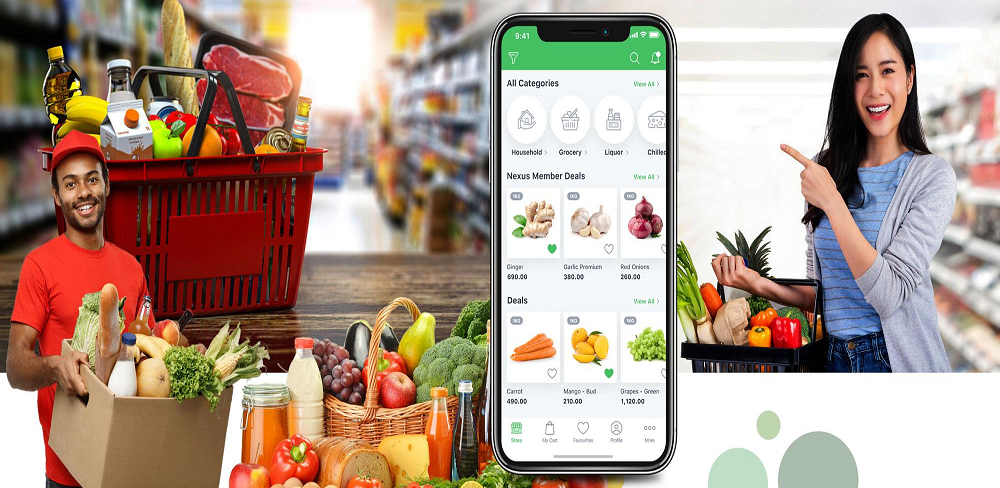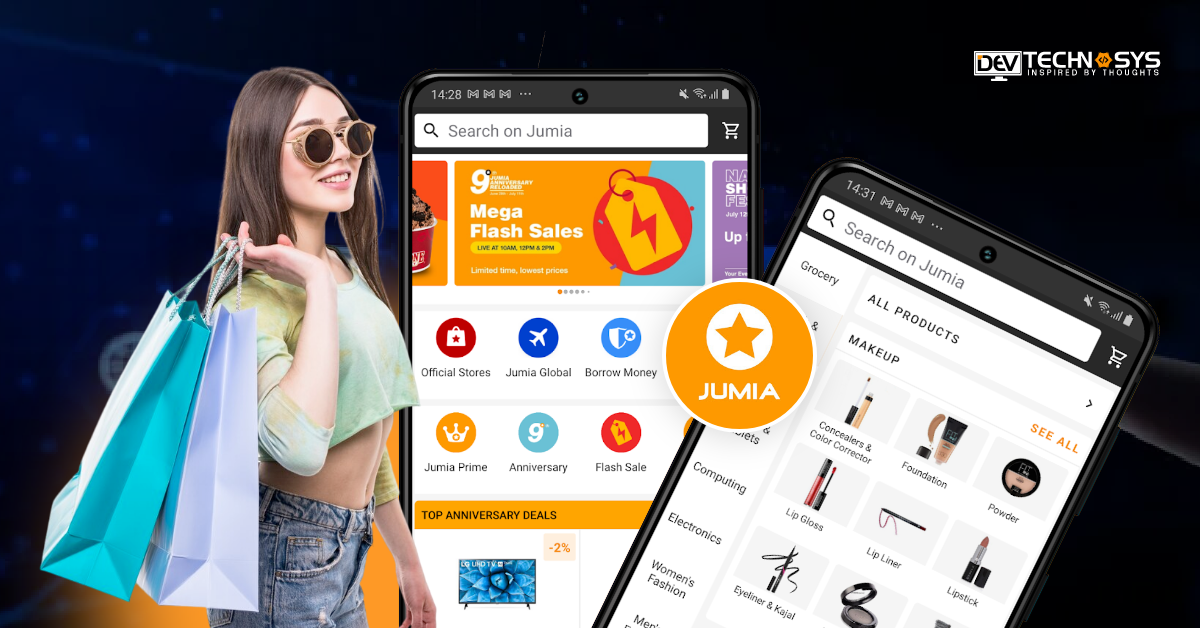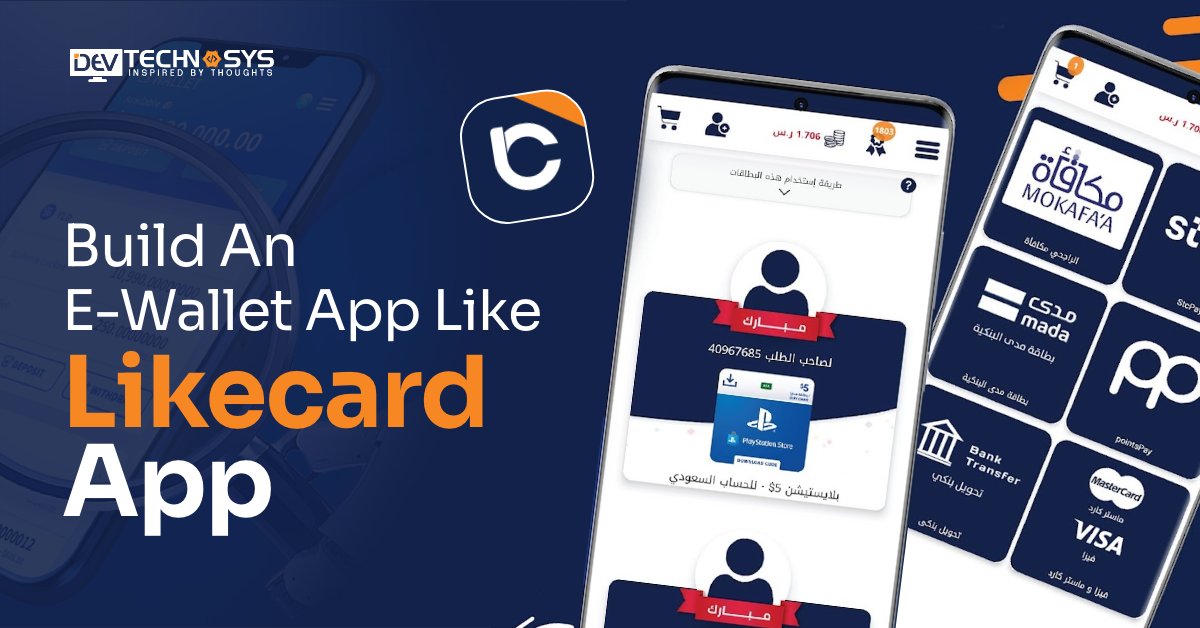In the present consumer-oriented market, grocery has been a primarily growing sector. The revenue forecast and last few years sales showed its yearly growth. The sector is quite untouchable with ongoing market shifts and upheavals. Due to this, the grocery app development is building a new customer-centric ecosystem in the market.
Today, due to an unbalanced life-work balance, people don’t find enough time to buy food items from the supermarket. The long queues and less time have requested a need for food delivery app development services. Here, the market has geared to build a grocery application to deliver products at the customer’s doorstep.
Undoubtedly, online grocery stores are forming a new quick, successful and convenient way of delivering food items to people’s homes
How Grocery Delivery Apps Share in the Market?
The growth of the online grocery market since the pandemic has been noticeable even with an excruciating experience at this time. In other words, with a long-term impact, the market needs to build a grocery application that almost changes the traditional way of buying groceries. It shifted from physical stores to virtual.
According to the study done by Mercatus and Incisive projects, a research firm, the online grocery market is expected to swell to around a $250 billion market. The estimate supports the post-pandemic rally in the consumer market.
Types of Online Grocery Apps like Ocado
The recent development in consumer-oriented services, and on-demand food delivery app development services, can’t be ignored. With the hectic daily life cycle, the importance of online grocery delivery services is growing competitively.
Here, the online grocery apps still have traditional but quite automated retailing operations. From order fulfillment operation to final mile or delivery operation, everything fulfills the consumer demand.
Here, it is important to make you understand the categorization of grocery app development before deciding to hire dedicated developers.
- An entity-owned Grocery Chain: These are related to the traditional grocery store allowing the customer on request delivery to the home. It is also known as A staple Chain. The extent of the entity-owned grocery chain is mostly regional and situated at a place with tiny scale operations.
- Aggregator: Here, the customer can choose their nearby supermarket, order, and deliver at their home. The aggregator app provides lists of all available supermarkets near to the customer as per their geographical location. The customer can pick from their selected store anything they want. It is easy to add different products to their cart. They are allowed to use various payment channels like PayPal, Stripe, PayU, cash on delivery, etc. Once the store confirms their order, it’s easy to track the entire journey of the order until it is received by the customer.
- Market Place: In the marketplace supermarket, It possesses a commercial center. Here the delivery men have delegated the responsibility to convey the order to the requested destination with available mobility arrangements. The entire viability of the process depends on the specific demand-supply operations. This kind of marketplace caters to the B2C segment of the market.
Here, it is quite better to talk about specific and targeted grocery app development
- eCommerce Grocery Apps: In the last few years the trend of online grocery apps has been nurtured. Ecommerce grocery apps make people able to buy and order grocery products. The convenience and accessibility to buy a different range of products without stepping out, and getting it delivered, is building a customer-centric ecosystem.
- Local Grocery App: An store grocery app or Local grocery app, is developed to make it easy for the customer to have a virtual view of the in-store purchase. In other words, the buyer can experience through the app the virtual experience with all categories of available grocery products. With the competitive customer experience preference, consistent modifications are so common these days.
- Customized or Personalized Grocery Apps: It gives a newly arranged bing experience to the people. Here the users can easily share the grocery list with their store and get the products instantaneously. These are quite personalized grocery apps, every store has different and specified features, User experience, platform, etc.
- Individual Store: The single store apps, or single grocery store apps are more store concerned apps. In this type of app, the owner of the grocery store takes a commission on the branded product in their list and takes care of all things from keeping the stock, stock update, customer notification, order delivery, collecting cash, etc. It is termed as the popularly used grocery apps, where the commission-based revenue adds to more sales. Furthermore, it is fairly performed well to keep your customers happy and satisfied.
Features of Grocery Delivery App like Ocado

The grocery application development goes through a dedicated process. It works on different phases and panels. So, while heading for the features, it is important to consider every aspect while developing a grocery delivery app.
User Panel
The User panel makes it possible for the users to place their orders. In other words, the user app allows them to buy and order their products. It is also responsible for a dedicated order management process. The User Panel controls the due quality of the services and effectively identifies every concern for improving the entire app performance.
- User Registration: Here, the user can register with their details, email, password, etc. The user can also sign in easily through social media accounts like Facebook. It makes it easy for them to sign up or sign in for making an order.
- User Login: Soon after a user gets registered, the users can easily login through their credentials. They will be directed to the grocery delivery app home page. Here, the users are ready to choose from all the products, available offers, delivery options, payment channels, etc.
- User profile: Once the users register and log in, they get ready to dive into their dashboard. They can see the range of products, sections, deals, payment, order history, etc. In the user profile, it is quite easy to see, segregate, pick and order the products from the list in different categories.
- Notification: Users get timely notification about the offers on favorites, recent orders, coupons, etc. Some of the other features of the user profile are:
- Browse Products: The users are allowed to search for their favorite product from a different range of categories.
- Time Booking: Here, the user can book their time slot for the delivery of the products. The customized delivery time makes it more convenient for them to use grocery delivery apps.
- Multiple Payment Channels: With convenient, secured, and reliable payment channels, the users can make payments for their orders.
- Reviews: The reviews are always helpful in deciding the buying decision of the people. Here, the users can write about the shopping experience,
- Settings: The user can manage their profile and further options through settings.
Admin Panel
The Admin panel to build a grocery application is an important part of the grocery delivery app development. It is quite responsible for every representation of the due information which is completed in the app’s backend and its control panel. With the admin panel, the users are allowed to create posts, links, new categories, etc.
- Dashboard: Here the dashboard helps the Admin to see all orders placed and user activities on their app.
- Payment Data Management: The admin can effectively manage every payment gateways and can make sure that the shared data of the consumer is secured and encrypted.
- Time Management: Here, the admin is allowed to manage, add, edit, delete the time in the user’s app. The time slot management can be managed and modified if any discrepancies or interim modification is required.
- Customer Management: Admin can add, edit or delete the users of the app. It makes it possible to keep the users engaged with quality services.
- Store Management: It allows the admin to make sure that orders and other activities are being managed most effectively.
- Offers Update: The admin can accept or delete all the orders. It makes order management more functional and easy at the same time.
- Inventory Management; The admin panel makes it possible to monitor and control the inventory update. Here, it allows the admin to manage the stock of the store.
- Analytics Report: With all the different factors, it makes it possible for the admin to have an analytical report. It helps to show the performance of the application.
Delivery Panel
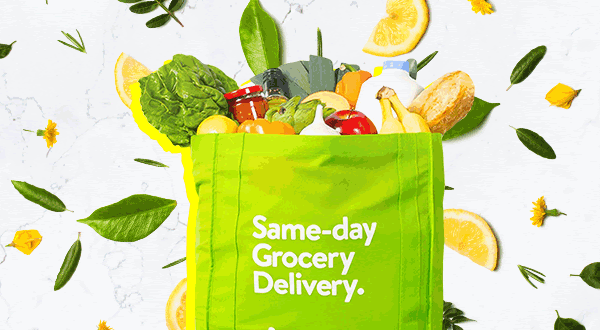
Now, after the user panel and admin panel, here the delivery panel comes in. The admin here directly assigns the delivery personnel to deliver goods to the requested destination. The driver follows the GPS location inbuilt in the app and navigates to the user’s destination.
- Driver Login: The Admin allows the driver to log in to the app with all details they have. The login details are given by the admin. Once the delivery person logs in, they can see, receive and deliver orders.
- Dashboard: After logging in, the driver comes to the home screen or dashboard. Here, the dashboard shows the recent orders, delivered, or canceled by the user.
- Location Tracking; With the help of the navigation system or inbuilt GPS tool, the driver can easily track the customer’s location.
- Push Notifications: Timely notifications to the driver make it possible for him to get recent updates about the new or canceled orders.
- Delivery Updates: Here, the driver panel makes them notified for every order delivered.
- Driver Profile: The driver can add, edit or delete their details. It is easy to manage their profile through the driver panel.
Read More: How to Develop a GPS Tracking System for Vehicle and Fleet Tracking?
The User Panel, Admin Panel, and User Panel developed an effective, effectual and user-friendly grocery delivery app. Still, there are so many factors that play an important role in a successful journey for the online grocery ecosystem like, service management, Fleet, Managerial coordination, etc.
Due to the competitive market, there will always be a consistent change happening in every sector. In the last few years, food delivery app development services have consolidated every factor that serves the consumer market. Mostly it happens when the market is quite customer-oriented. Here all you need to do is to satisfy the needs of the customer, without compromising the quality and convenience.
So, here there are still some advanced features that keep the overall grocery app development process more competitive, qualitative, and promising.
- In-app calling
- Data sync,
- Geolocation
- Live track
- Real-time analytics
- Big Data management
Technology Stack for the Development of Grocery Delivery App
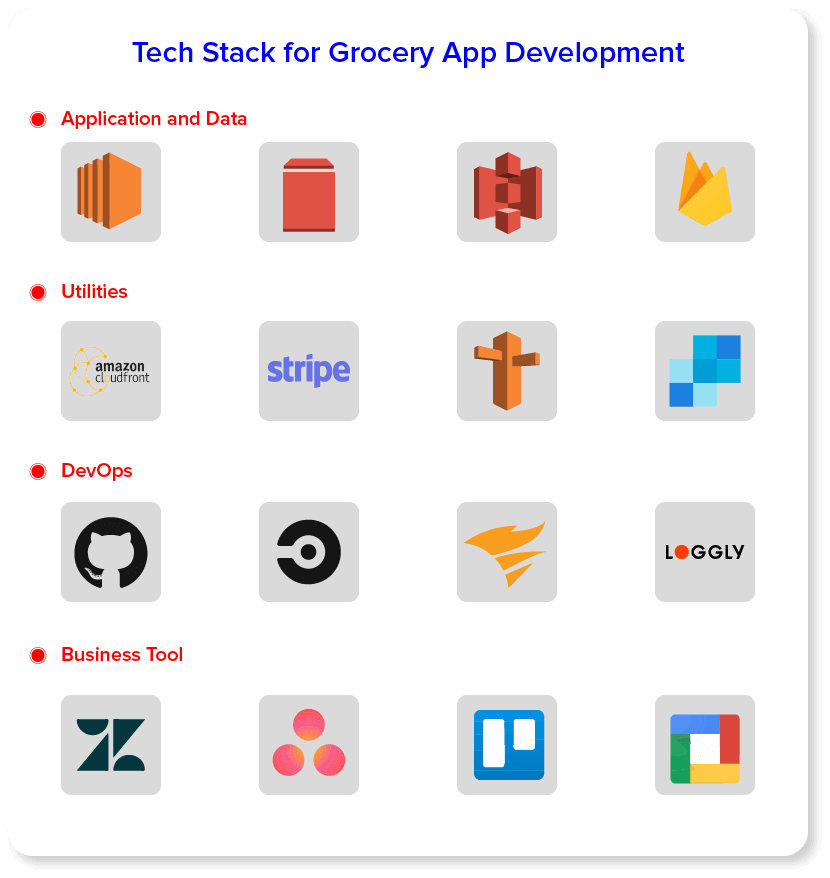
Once you decide on the perfect niche, the market, and the Android app development company, you need to develop a grocery delivery app. Here is the list of the technology stack you need to develop an efficient, competitively featured, and updated grocery delivery app.
- App Platform: You need to decide what platform you choose for your app. The grocery delivery app would be on Android, iOS, web app platforms.
- Backend: PHP
- Front End: Objective-C, Java,
- Push Notifications: Firebase, Twilio,
- 3rd party apps: Google Map
- Database: MongoDB
- Payment Gateway: Stripe, Paypal, Braintree,
- Real-time Analytics and Traffic Analytics: Use Google Analytics
- Cloud Environment: AWS
How Much the Development of the Grocery Delivery App Cost?
You need an efficient resource team for food delivery app development or online grocery delivery apps. In between the highly customer-centered ecosystem in the market, the user experience matters the most. The user’s experience while buying produc=ts online has already been a core objective in the eCommerce market.
With the consistent technological development and market change, it’s better to be leveraged your development team with skilled developers. In other words, to develop an efficient, high-performance, and quality app, a comprehensive plan is needed.
Then, you start targeting the main objective behind your grocery app. But here, the team effort is still working as a foundation for you. So, it is better to hire dedicated and skilled developers, experts, and experience rich. The entire development team would be like
- Project Manager
- 4-5 iOS or Android app developers
- Business Analyst
- QA engineer
- 1 Backend Developer
- UI/UX designers
- Database Manager
- Delivery Manager
- System Administrator
The cost of grocery app development depends on so many factors. So, you need to keep in mind everything about the technology, third-party apps, platform, customers, markets, etc. It is to be noted how complex you decide to build a grocery application, with a targeted market and updated technology, the more it would add to total development cost.
You are required to hire people who can understand your vision. It is important to have a coordinated approach and specific plan to be followed for organizational vision. So it is better to explore more skilled workers with a cost-effective plan so that your development cost should not add more than your budget.
Let’s Have an Estimate About the Possible Cost Charged by App Developers Around the World
- In the case of Eastern Europe, developers cost you around $85 an hour to $160 per hour.
- The SA-based developers cost around $60 per hour to $275 per hour.
- While in the case of India-based grocery app developers adds around $15 per hour to $90 per hour.
- The entire grocery application development with limited features:
- Technical documentation $800 to $2000
- UI/UX Designing costs $1800 to $3000
- QA and testing costs $1500 to $4500
- Front-end and Back-end development $8,000 to $ 20,000
So, the entire app development cost revolves around different factors. To build a grocery delivery app like Ocado, for a single platform either on iOS or Android, would cost you about $12000 to $15000. However, the more features you would add to your grocery app, it will add more cost to the entire app development cost.
Takeaway
Undoubtedly, In the coming years, the online grocery industry would be more nurtured and growing. The consumer-centered and competitive market is driving the grocery industry. There is a high probability of a healthy surge in the market share of the online grocery delivery post-pandemic. There are robust possibilities of potential growth of the online grocery delivery market. Every Android or iPhone app development company needs to be equipped with the relevant technological stack.
With a convenient, modified, and nonorthodox buying experience, the customers have made it in their buying style. Orders on your fingertips in a second are making the entire ecosystem of buying and selling more digitized, quick, leveraged, and futuristic. We are heading for the next big change in the market with a consistent moderated development in the consumer service segment.









